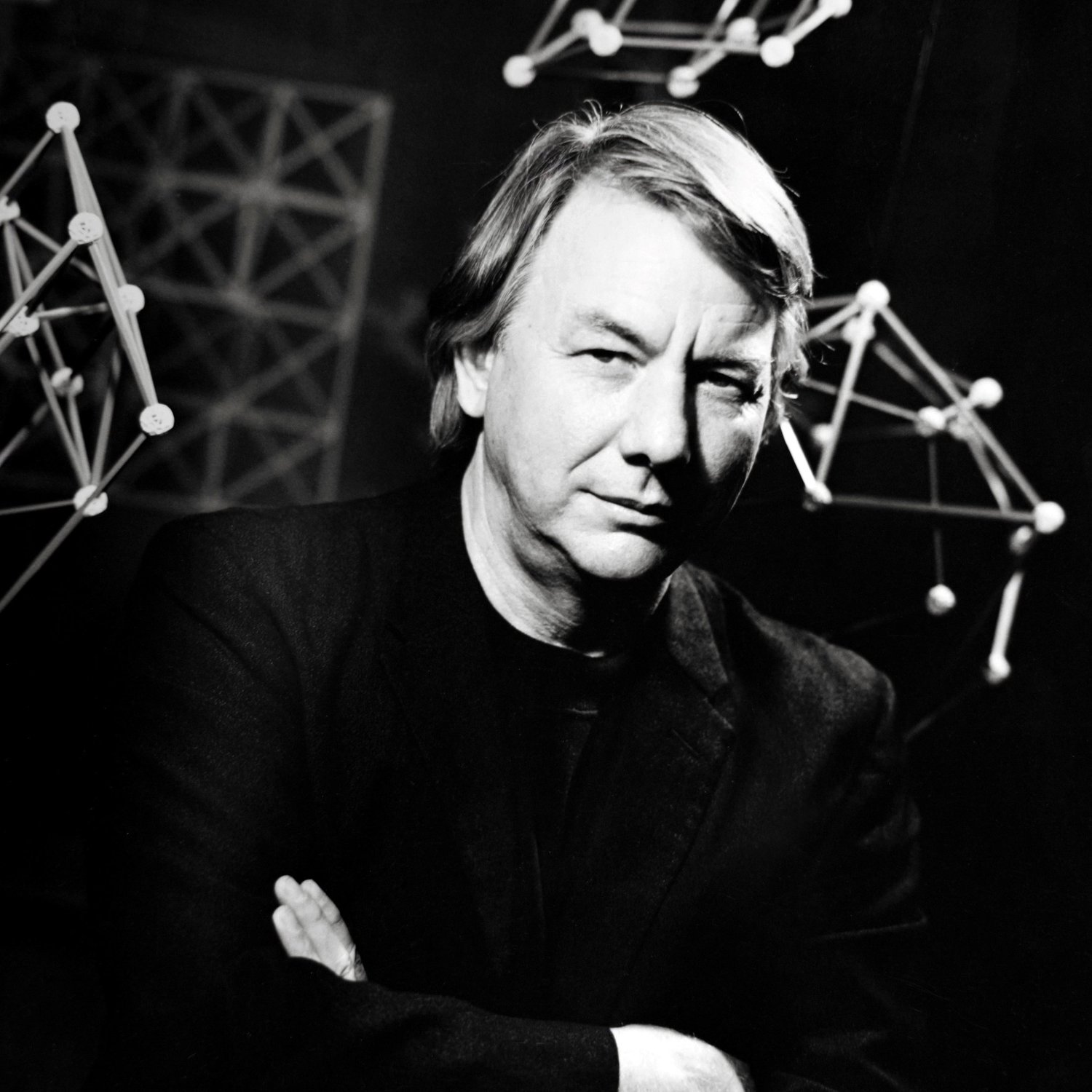Unfolding the Vacuum Series
“Implicit in nothingness is somethingness; implicit in off is on.” —Clark Richert
After exploring pictorial space in the late eighties, Richert began to distill his thought about structure and motif. One of the results was his stunning Unfolding the Vacuum series—six 70”x70” and one 72”x89” paintings that took viewers journey from nothingness (zero dimensionality) through one- two-, three-…multi-dimensional projections into a rich complex of possibilities. Each painting depicts on stage of projection against a dramatic black background: and with each step, more color and imagery is introduced. The series was shown to critical acclaim at the Arvada Center for the Arts and Humanities, in Arvada, Colorado.
Here is how Richert described the series:
Pictured here is Enneacon, which features the rhombic enneacontrahedron placed within a cubic frame, where it projects 2D shadows as light passes through. (2003, Acrylic on canvas, 73.5” x 89”)
“The ‘Death of Art’ was proclaimed by the onset of Minimalism in the sixties; and reasserted as the ‘death of modernism’ in post-modern thought. Using nothingness (the black hold of minimalism) as a point of departure, and starting with the one-dimensional binary relationship between nothingness and somethingness (vacuum and form, ground and figure, zero and one), Unfolding the Vacuum is an attempt to systematically diagram a reconstruction from nothing. This diagram has two basic components: Structure (formal) and Motif (content). For instance, the structural element: a one-dimensional line (black on one end and white on the other) might signify the motif: the complementary relationship between life and death. What follows is a systematic unfolding of structural relationships through dimensions (in this model 0- through 10-D). As each dimension unfolds implicit additional content is signified. Like Plato’s model that postulates reality is just a shadow, Unfolding the Vacuum postulates that our world is a projection from higher dimensions. Operating from a structural coordinate system provides a sort of measuring device to hold up to experience for comparative purposes. Recognizing that reality itself is irrational, Unfolding the Vacuum functions in much the same way a square grid (rational and digital) is used as a map to describe the surface of the Earth (non-Euclidian, irrational). Although a map cannot be reconciled with its terrain, one cannot deny its usefulness. You cannot navigate the Earth without a map.”
- Clark Richert, Artist’s Statement, 1997





